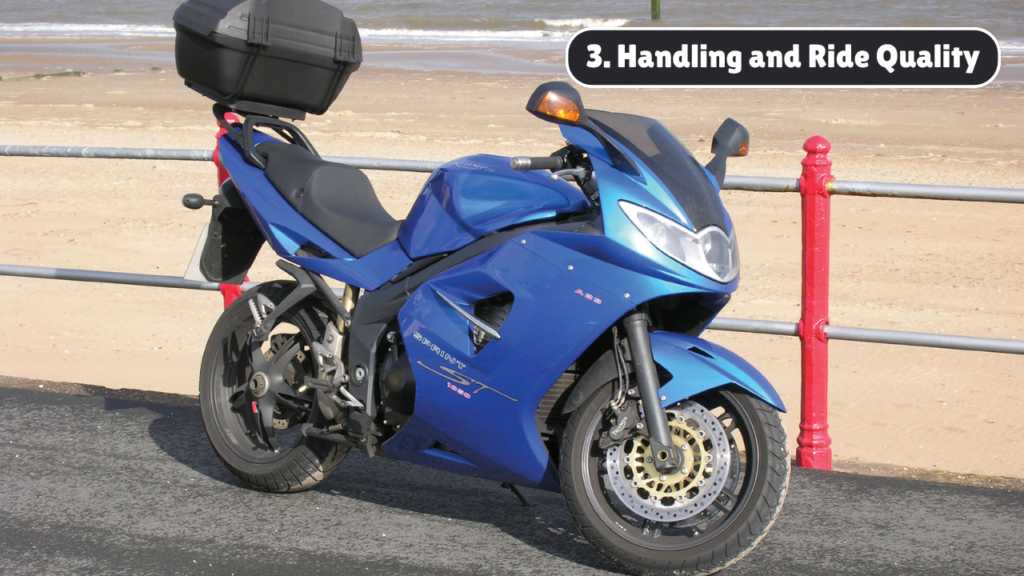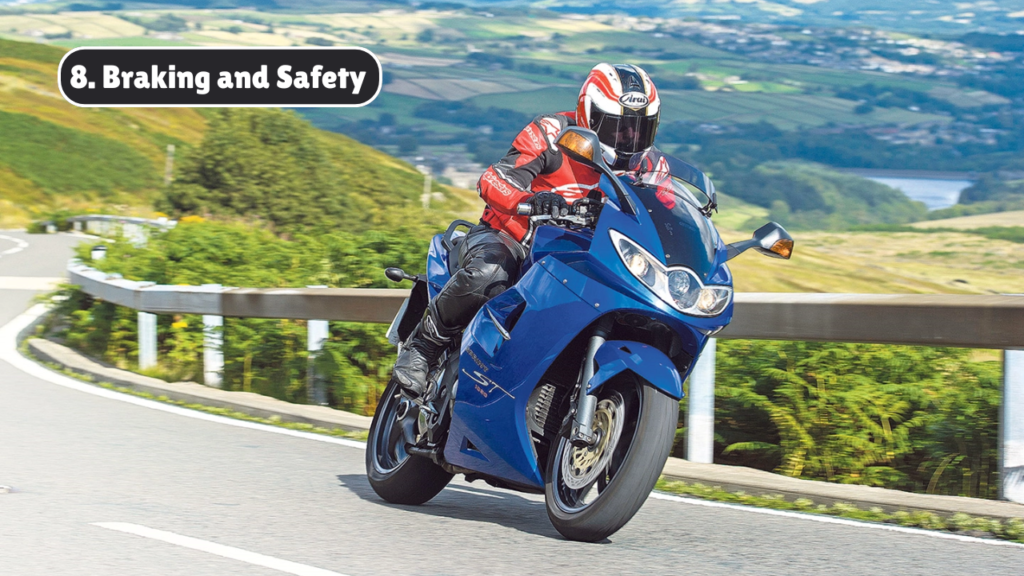Introduction
The Triumph Sprint GT represents the golden mean between high-speed touring and everyday practicality. Designed as a sport-tourer that delivers comfort over long distances without compromising on agility or performance, the Sprint GT has long held a beloved spot in Triumph’s lineup. Whether you’re blasting through mountain passes, carving corners on the weekend, or commuting during the week, the Sprint GT is a machine built to handle it all.
First introduced in 2010 as an evolution of the Sprint ST, the GT (Grand Touring) model featured key upgrades aimed at better long-range touring capabilities while still retaining a dynamic riding experience. This article delves into every aspect of the Sprint GT—from its heritage and engineering prowess to its long-distance comfort and real-world ownership experience.
1. Heritage and Evolution
Triumph’s Sprint series traces its roots back to the early 1990s, beginning with the Sprint 900. However, it was the Sprint ST (Sport Touring), introduced in 1999, that truly brought Triumph into the modern sport-touring conversation. In 2010, the Sprint GT replaced the ST, bringing a longer wheelbase, enhanced luggage capacity, and revised ergonomics aimed at serious tourers.
The GT’s design reflects a shift towards practical touring with fewer compromises. While sport-touring was once about compromise, the Sprint GT aimed to strike a better balance.

2. Engine and Performance
Powering the Sprint GT is Triumph’s iconic 1050cc inline triple engine, producing around 130 horsepower and 108 Nm of torque. The engine is the heart and soul of the bike, delivering silky smooth power with a thrilling midrange punch.
Engine features:
- Liquid-cooled DOHC 12-valve triple-cylinder
- Fuel-injected for clean, efficient performance
- 6-speed gearbox with seamless shifts
- Chain drive with durable construction
On the road, the GT pulls strong from low RPMs and surges through the midrange. The triple-cylinder configuration offers a perfect blend of torque and top-end power.
3. Handling and Ride Quality
Despite its touring ambitions, the Sprint GT remains a sporty and agile machine. The bike’s chassis and suspension have been tuned to handle a variety of conditions, from twisty canyon roads to straight-shot highways.
Handling attributes:
- Twin-spar aluminum frame for rigidity
- 43mm front forks (non-adjustable) and preload-adjustable rear monoshock
- Sporty yet stable geometry
- Excellent lean-in and cornering behavior for a large bike
Its 267 kg wet weight is well-distributed, and the ride remains composed even when fully loaded with luggage and a passenger.
4. Design and Aesthetics
The Sprint GT continues Triumph’s tradition of sleek, understated design. The fairing is aerodynamic and functional, offering good wind protection while retaining a modern aesthetic.
Design highlights:
- Streamlined fairing with dual headlights
- Tall windscreen for reduced wind buffeting
- Integrated hard panniers as standard equipment
- Clean rear-end design with under-seat exhaust
While the styling may not turn heads like an Italian superbike, the GT’s form follows function ethos makes it a timeless choice.
5. Touring Capabilities
The GT moniker isn’t just for show. The Sprint GT is genuinely built for long-haul riding. From generous luggage space to rider/passenger comfort, it shines as a tourer.
Touring features:
- 31-liter integrated panniers (standard)
- Comfortable seat for rider and pillion
- Upright, relaxed riding position
- 20-liter fuel tank offering over 300 km range
Optional accessories include a top box, heated grips, and taller screens, all enhancing the GT’s cross-country credentials.
6. Ergonomics and Comfort
Triumph focused heavily on comfort when developing the GT. The bike features a wider seat, adjusted footpeg positions, and higher handlebars compared to the ST.
Comfort features:
- Plush seating for long-distance rides
- Good legroom for both rider and passenger
- Tall windscreen reduces fatigue
- Balanced ride quality, even on bumpy roads
Though not as plush as a full-dress touring bike, the Sprint GT provides an ideal mix of comfort and control.
7. Instrumentation and Electronics
The dashboard is traditional and effective, with three analog dials for speed, RPM, and fuel, complemented by a digital LCD readout.
Tech features:
- Digital trip meter, gear indicator, and fuel gauge
- Basic onboard computer with range and fuel economy
- Optional heated grips
- No ride modes or traction control
While not packed with tech, its simplicity is refreshing and keeps the rider focused on the road.

8. Braking and Safety
The Sprint GT is equipped with dual 320mm front discs with Nissin 4-piston calipers and a 255mm rear disc. ABS comes standard, providing added confidence in all conditions.
Safety overview:
- Powerful and progressive brakes
- Standard ABS for secure stopping
- Strong front brake feel for high-speed touring
The braking system is dependable and complements the GT’s sporty character.
9. Maintenance and Reliability
Triumph motorcycles are known for their reliability, and the Sprint GT upholds that reputation. Its robust construction and proven engine platform translate to lower long-term maintenance costs.
Maintenance insights:
- Valve inspections every 20,000 km
- Oil change every 10,000 km
- Chain maintenance typical for sport-tourers
- Durable bodywork and quality materials
A strong dealer network and online support community further enhance the ownership experience.
10. Pricing and Competitors
The Sprint GT is competitively priced among sport-touring machines. As of its final production years, it offered exceptional value considering its standard features and performance.
Estimated price (used market): AUD $8,000–$12,000 depending on condition.
Main competitors:
- Yamaha FJR1300: More powerful and feature-rich, but heavier and pricier
- Honda VFR800: Lighter and high-tech, but less torque
- BMW R1200RT: Advanced touring comfort but significantly costlier
The Sprint GT shines with its value proposition and unique triple-cylinder charm.
Conclusion
The Triumph Sprint GT is a hidden gem in the sport-touring segment. It combines real-world performance with long-distance comfort and understated elegance. Riders looking for a versatile machine that can handle daily duties and cross-country touring with equal ease will find a lot to love here.
Its triple-cylinder engine is a standout feature—offering engaging power delivery and signature character. Add in its well-designed luggage system, ergonomic layout, and strong reliability, and it becomes clear why the Sprint GT has developed a cult following.
While newer models may offer more tech, few match the Sprint GT’s balance of price, power, and practicality. For those who value the ride over the screen, the Sprint GT continues to be an intelligent and inspiring choice.
FAQs
1. Is the Triumph Sprint GT good for beginners?
Not ideal for complete beginners due to its weight and power, but experienced riders transitioning to touring will find it approachable.
2. How does the Sprint GT perform in the city?
While slightly bulky for tight city maneuvering, it’s smooth and comfortable for urban commuting.
3. Can the Sprint GT handle two-up touring?
Yes, it’s well-suited for two-up touring with ample space, strong power, and integrated luggage.
4. Does the Sprint GT have modern electronics like traction control?
No, the electronics are minimal. It focuses on core riding experiences without electronic intervention.
5. Is the Sprint GT still available new?
No, the Sprint GT has been discontinued, but many excellent used examples are available at reasonable prices.



